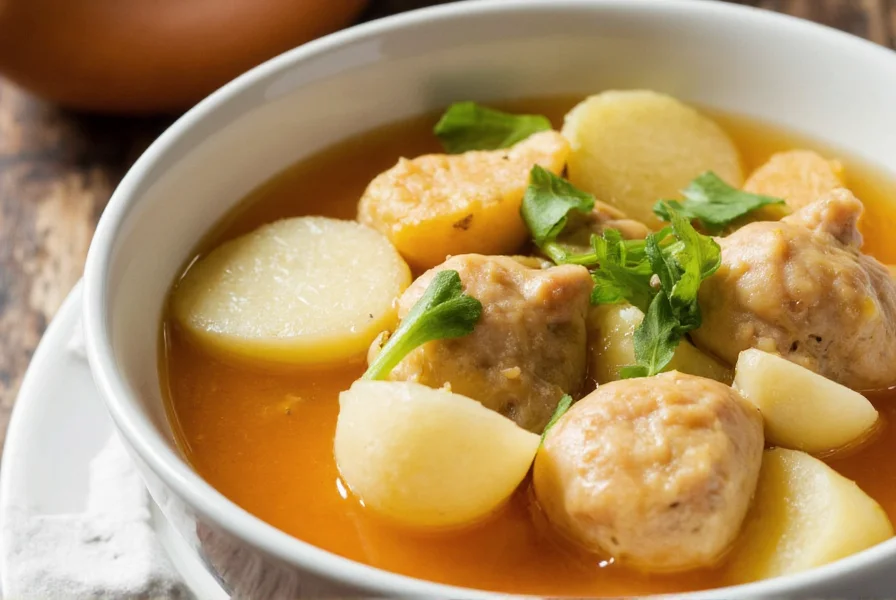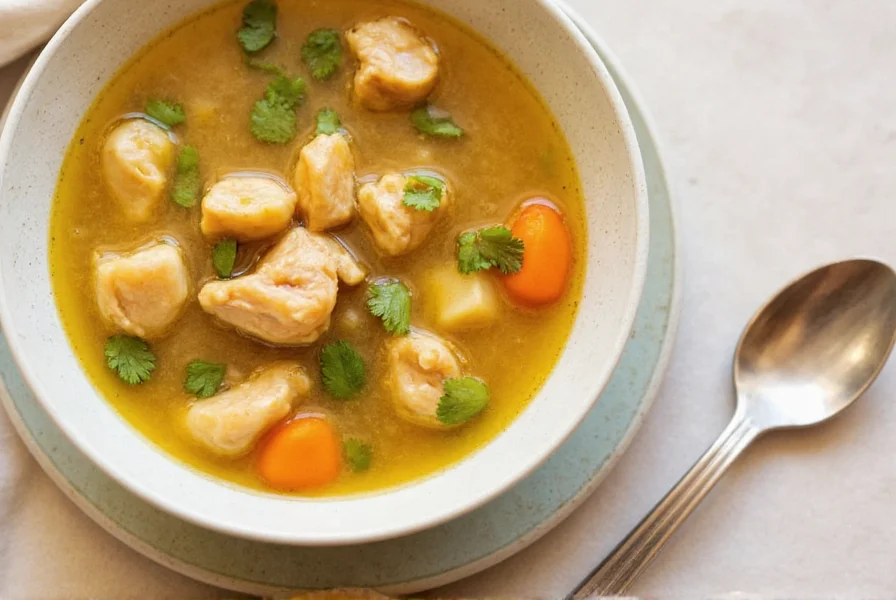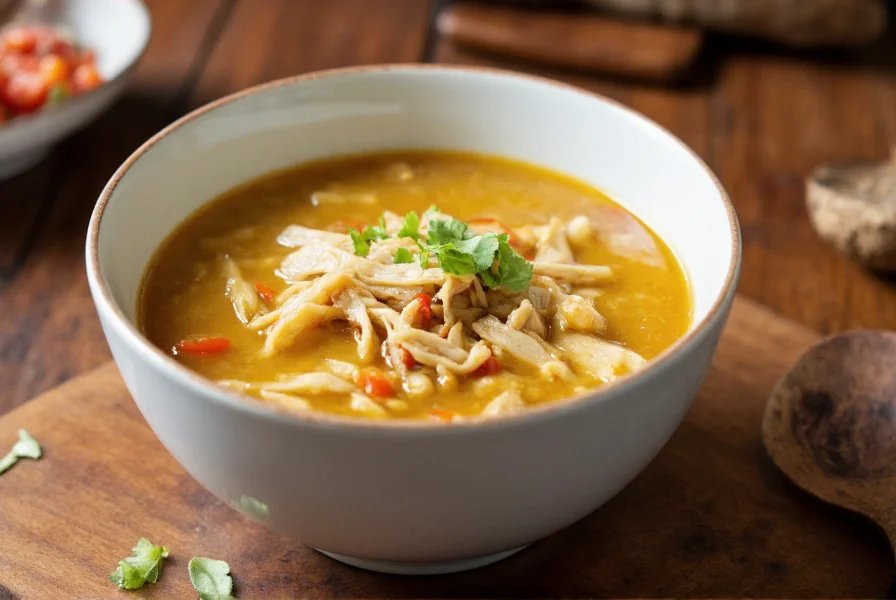For centuries, chicken ginger soup has been revered across Asian cultures as both culinary comfort and medicinal remedy. This simple yet profoundly effective preparation combines humble ingredients to create a nourishing broth that addresses multiple health concerns while delivering exceptional flavor. Unlike standard chicken soup, the addition of fresh ginger transforms this dish into a therapeutic powerhouse with scientifically validated benefits.
The Science Behind Ginger's Healing Properties
Ginger's active compound, gingerol, has been extensively studied for its anti-inflammatory and antioxidant effects. Research published in the Journal of Medicinal Food demonstrates that ginger can reduce inflammation markers by up to 30% when consumed regularly. When incorporated into chicken soup, these properties combine with the broth's amino acids like cysteine to create a synergistic effect that:
- Reduces nasal congestion and throat irritation
- Accelerates recovery from upper respiratory infections
- Supports gut microbiome balance
- Provides easily digestible protein during illness
| Nutrient | Per Serving (1 cup) | Health Benefit |
|---|---|---|
| Gingerol | 15-20mg | Reduces inflammation, eases nausea |
| Cysteine | 120mg | Thins mucus, improves respiratory function |
| Gelatin | 2.5g | Supports gut lining, joint health |
| Vitamin B6 | 0.3mg | Boosts immune function, reduces fatigue |
Authentic Chicken Ginger Soup Recipe
Creating truly therapeutic chicken ginger soup requires attention to ingredient quality and preparation technique. This traditional preparation maximizes both flavor and medicinal properties through proper simmering and ingredient sequencing.
Essential Ingredients
- 1.5 lbs chicken bones or carcass (preferably with some meat)
- 3-inch piece fresh ginger, thinly sliced
- 1 large yellow onion, quartered
- 3 garlic cloves, smashed
- 1 large carrot, roughly chopped
- 2 celery stalks with leaves
- 8 cups filtered water
- 1 tablespoon apple cider vinegar
- Sea salt to taste
- 2 green onions, sliced for garnish
Step-by-Step Preparation
- Prepare the broth base: Place chicken bones, ginger, onion, garlic, carrot, and celery in a large stockpot. Cover with cold water.
- Add vinegar: The acid helps extract minerals from bones. Bring to a gentle simmer (not boil) over medium heat.
- Skim impurities: After 20 minutes, carefully remove any foam that rises to the surface.
- Simmer gently: Reduce heat to low and maintain a bare simmer for 1.5-2 hours. Boiling makes broth cloudy and bitter.
- Strain and season: Remove solids through a fine-mesh strainer. Discard vegetables and bones. Season with sea salt.
- Optional refinement: For clearer broth, strain again through cheesecloth.

Cultural Significance Across Asia
Chicken ginger soup appears in various forms throughout Asian culinary traditions, each with distinctive preparation methods reflecting local healing philosophies:
- Chinese tradition: Served postpartum to restore vitality, often with additional herbs like goji berries
- Korean approach: Includes garlic and sometimes perilla leaves for enhanced medicinal properties
- Japanese variation: Simpler preparation focusing on delicate broth clarity, often with shiitake mushrooms
- Thai interpretation: Incorporates lemongrass and kaffir lime leaves for additional therapeutic benefits
These regional variations demonstrate how the fundamental healing properties of ginger and chicken broth have been adapted to local medicinal knowledge systems while maintaining the soup's core therapeutic purpose.
Maximizing Therapeutic Benefits
To enhance your immune-boosting chicken ginger soup recipe, consider these evidence-based modifications:
- Double ginger concentration: Use 4-5 inches of ginger when fighting active cold symptoms
- Add garlic late: Stir in minced garlic during the last 10 minutes of cooking to preserve allicin
- Incorporate mushrooms: Shiitake or reishi mushrooms add immune-modulating beta-glucans
- Include turmeric: A teaspoon of turmeric with black pepper increases anti-inflammatory effects
- Use organic bones: Ensures cleaner broth free from antibiotics and hormones
For optimal absorption of nutrients, consume the soup while still warm but not scalding hot. The ideal temperature range of 140-160°F preserves the delicate compounds while providing soothing warmth to irritated tissues.
Storage and Reheating Guidelines
Proper storage maintains both flavor and nutritional integrity:
- Cool broth quickly by placing pot in ice water bath before refrigerating
- Store in airtight containers for up to 5 days in refrigerator
- Freeze in portion-sized containers for up to 6 months
- Reheat gently over medium-low heat without boiling
- Add fresh ginger slices when reheating for maximum therapeutic benefit

Frequently Asked Questions
How long should I simmer chicken ginger soup for maximum benefits?
For optimal extraction of nutrients and flavor, simmer chicken ginger soup for 1.5-2 hours. Bone broth requires this minimum time to release collagen and minerals. However, avoid boiling as it makes the broth bitter and cloudy. The ideal preparation maintains a gentle simmer where small bubbles occasionally break the surface.
Can I use ground ginger instead of fresh in chicken ginger soup?
While fresh ginger provides superior flavor and higher concentrations of active compounds like gingerol, ground ginger can be substituted in a pinch. Use 1/4 teaspoon of ground ginger for every inch of fresh ginger called for in the recipe. However, fresh ginger's enzymatic properties and volatile oils deliver significantly greater therapeutic benefits, especially for respiratory and digestive issues.
When is the best time to consume chicken ginger soup for cold prevention?
For preventive benefits, consume chicken ginger soup 2-3 times weekly during cold and flu season. When experiencing early symptoms, increase to 1-2 servings daily. The soup's compounds work cumulatively in the system, with noticeable immune support typically developing after 3-5 consecutive days of consumption. Morning consumption may provide all-day protective benefits.
Does chicken ginger soup help with digestion?
Yes, chicken ginger soup significantly supports digestive health. Ginger stimulates digestive enzymes and gastric motility, while the gelatin from bone broth helps repair the gut lining. The warm liquid format makes nutrients easily absorbable, particularly beneficial during digestive distress. Studies show ginger can reduce symptoms of indigestion by 25-30% when consumed regularly in therapeutic doses.
Can vegetarians achieve similar benefits with a plant-based version?
Vegetarians can create effective ginger-based broths using shiitake mushrooms, kombu, and root vegetables to mimic some benefits. While lacking the specific amino acids from chicken, adding miso paste after cooking preserves probiotics. Include extra ginger (4-5 inches), turmeric, and black pepper to maximize anti-inflammatory effects. Though not identical, this plant-based alternative still provides significant immune and digestive support.











 浙公网安备
33010002000092号
浙公网安备
33010002000092号 浙B2-20120091-4
浙B2-20120091-4